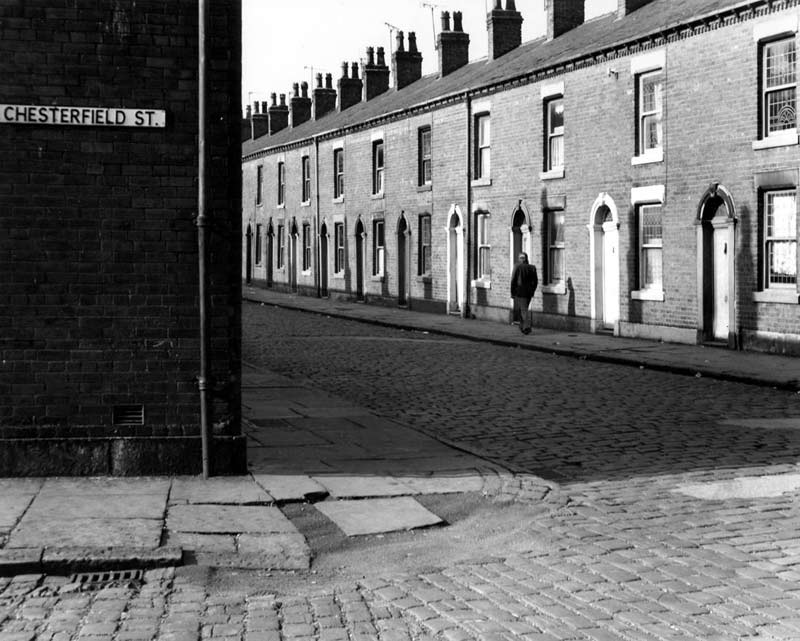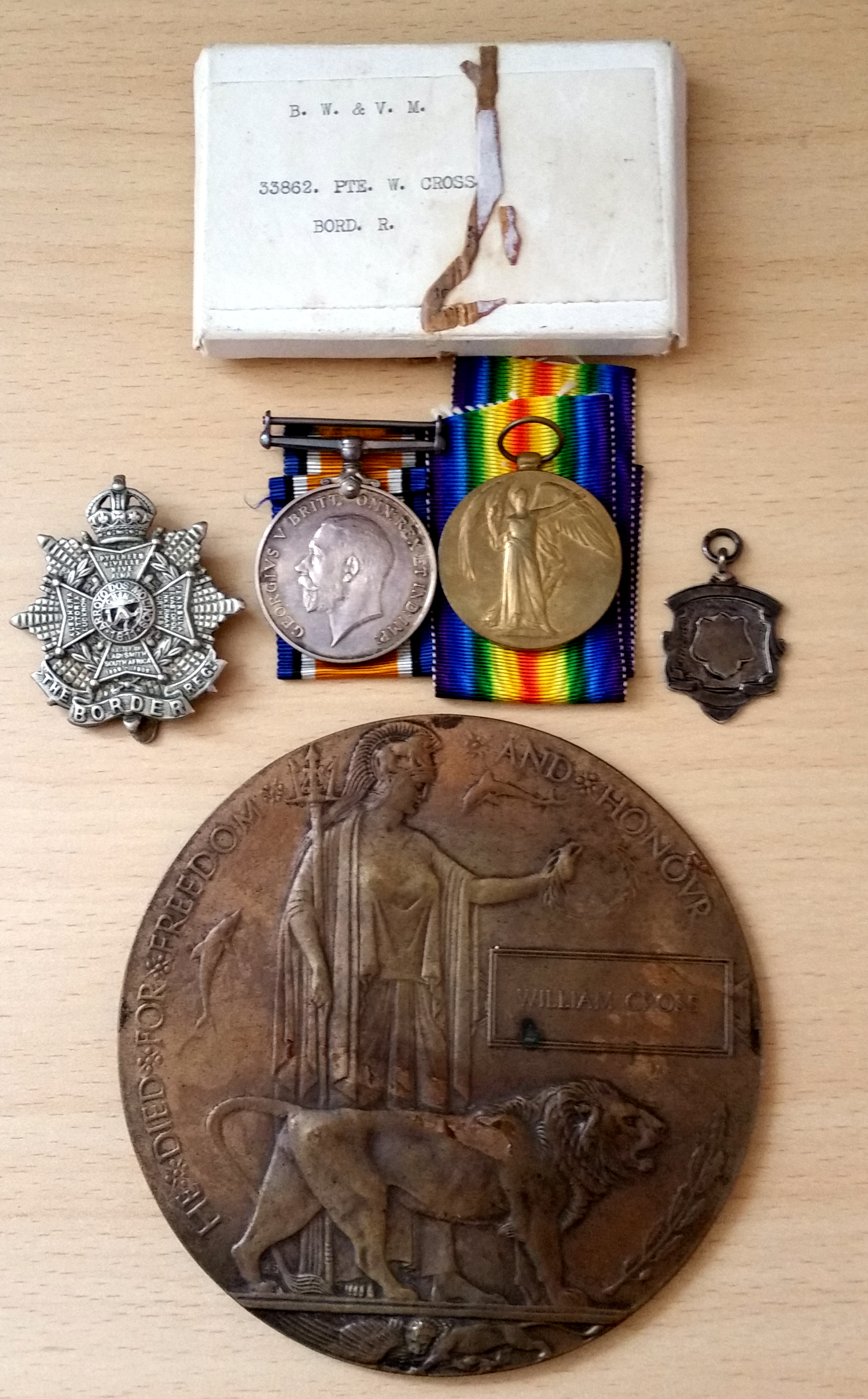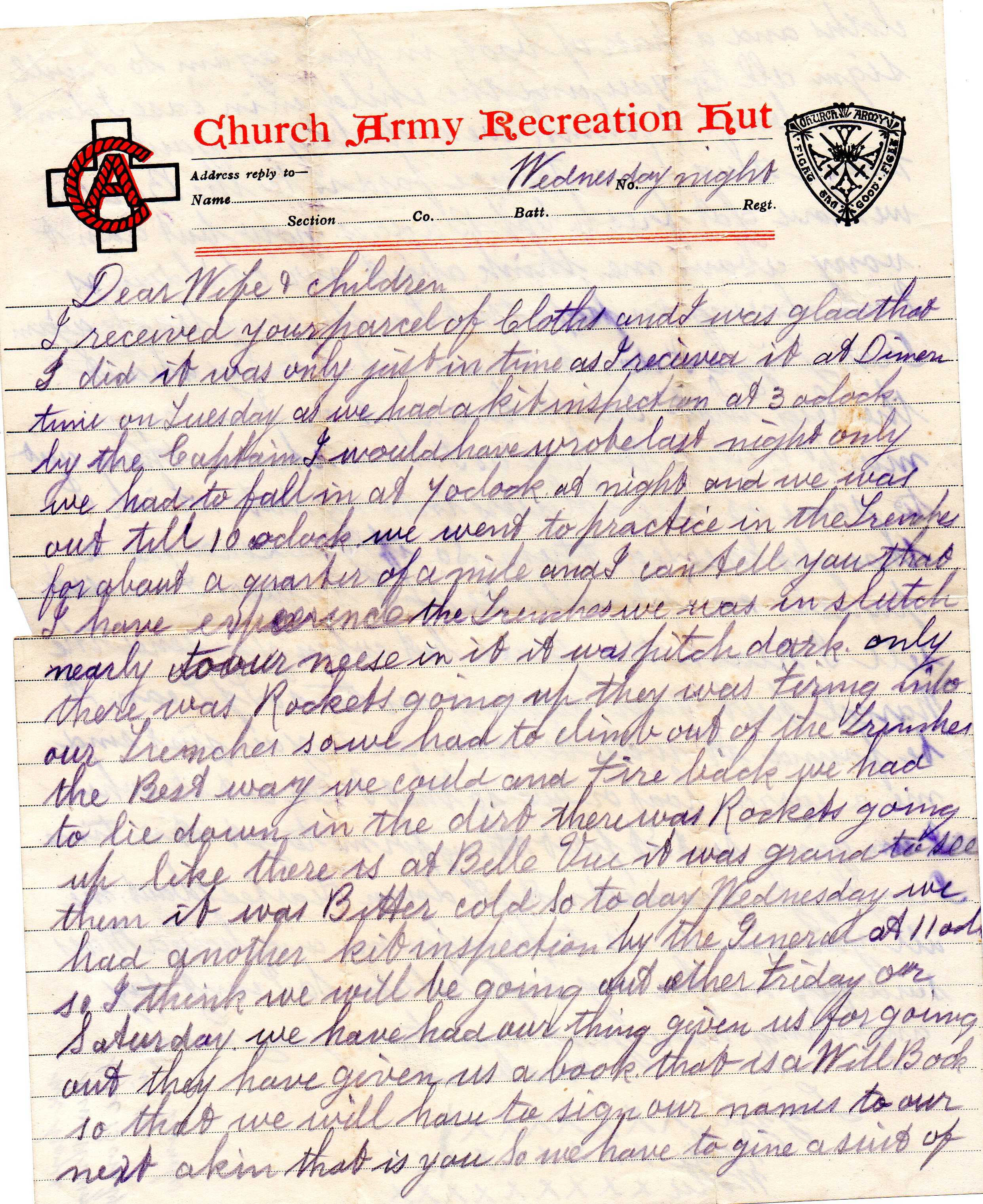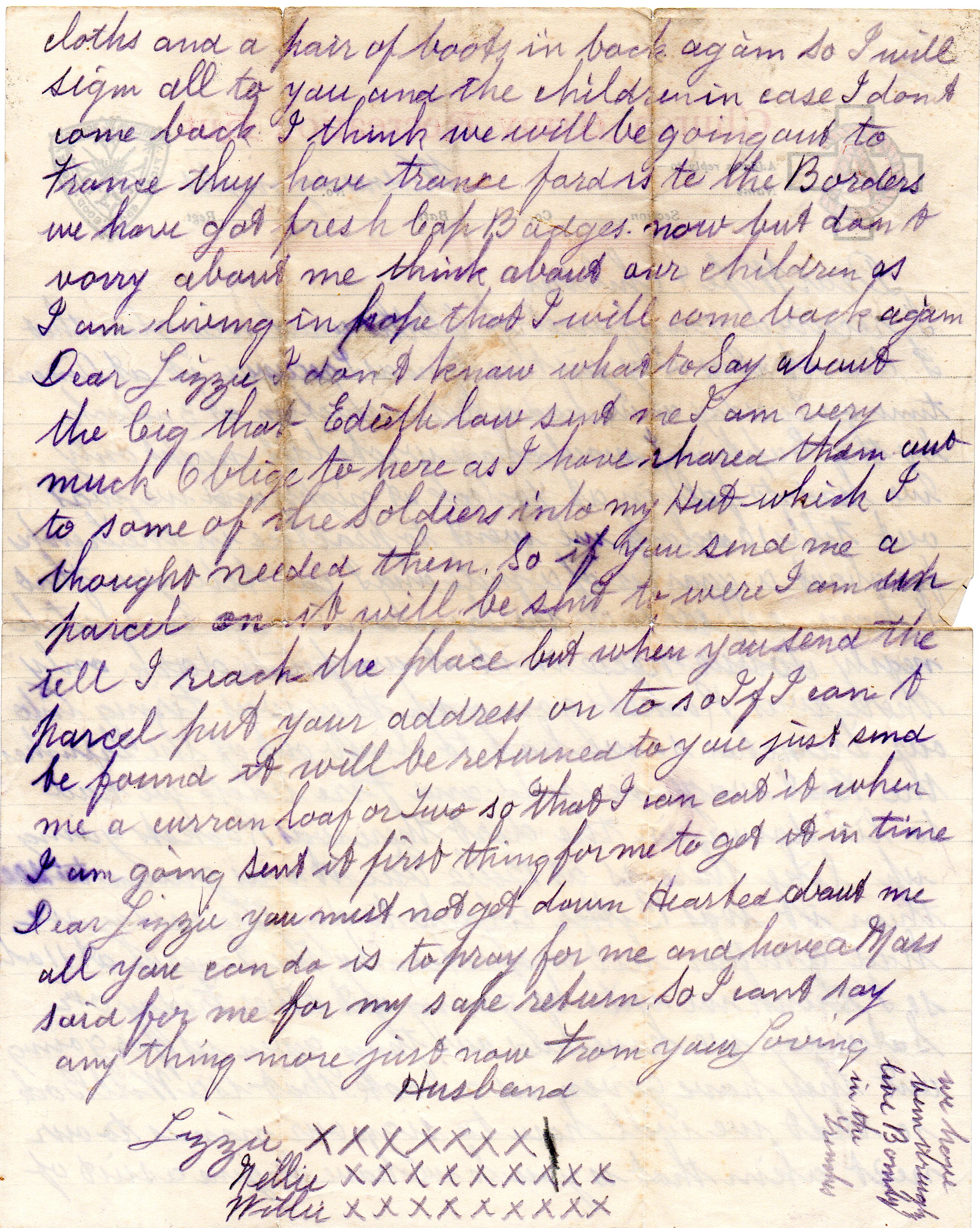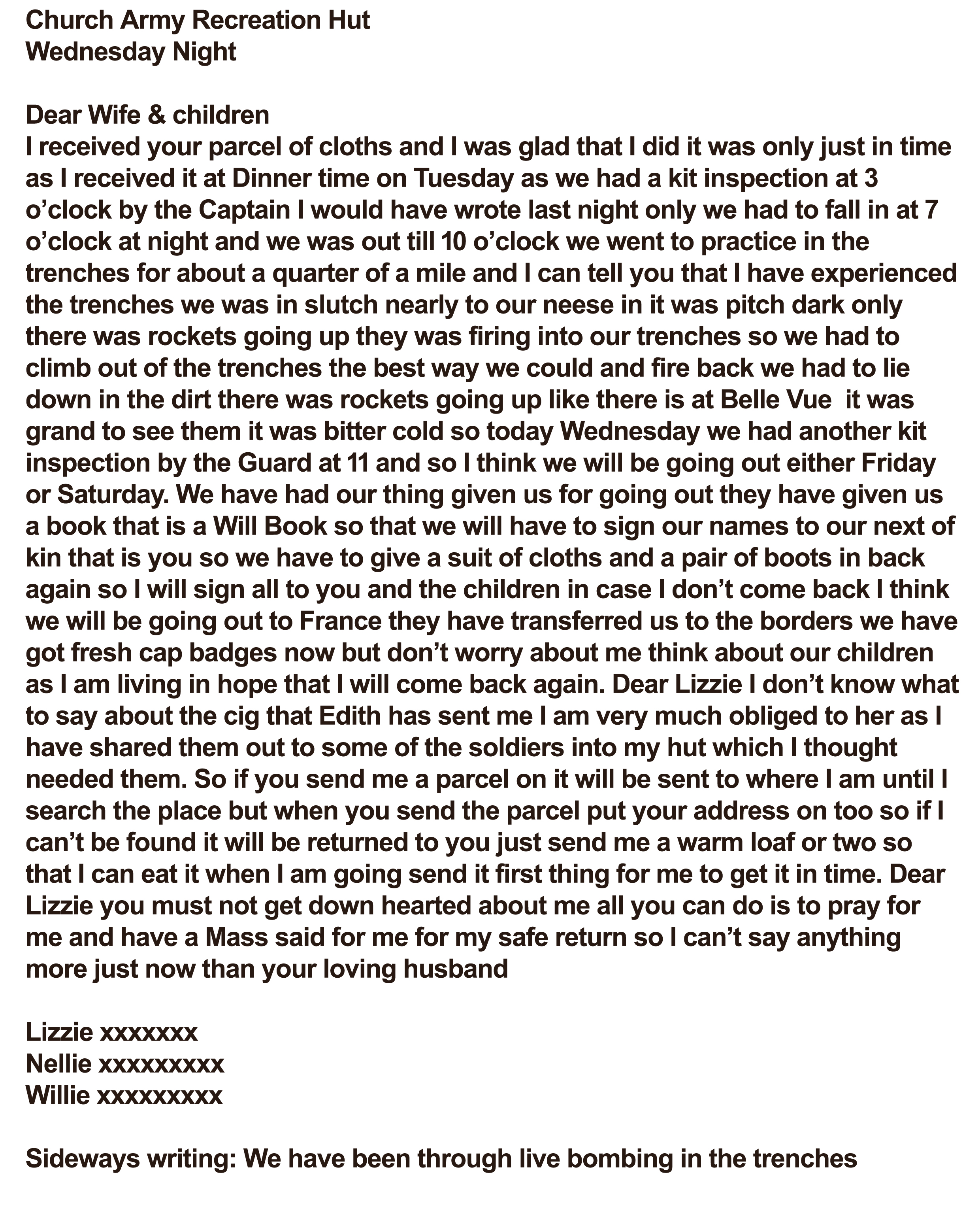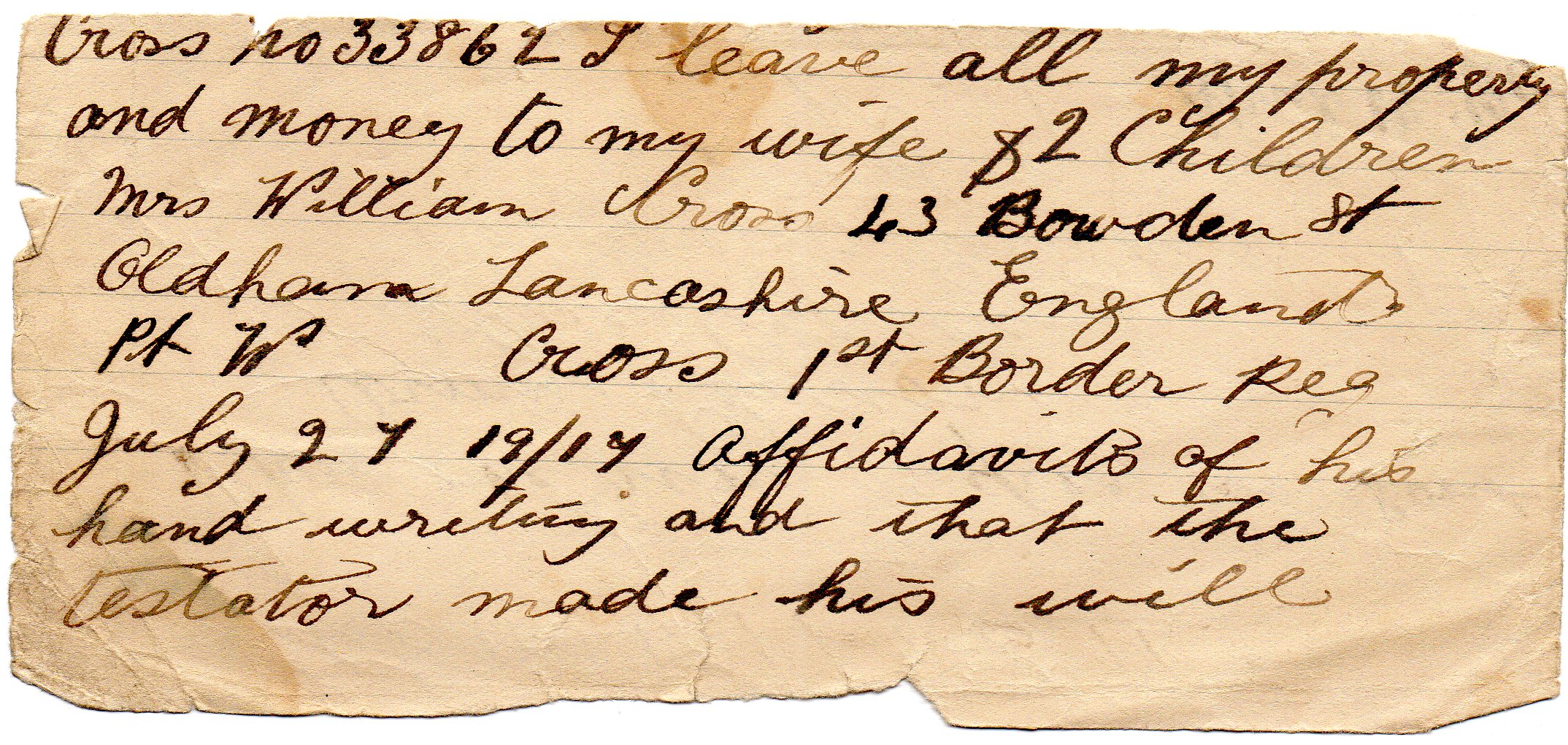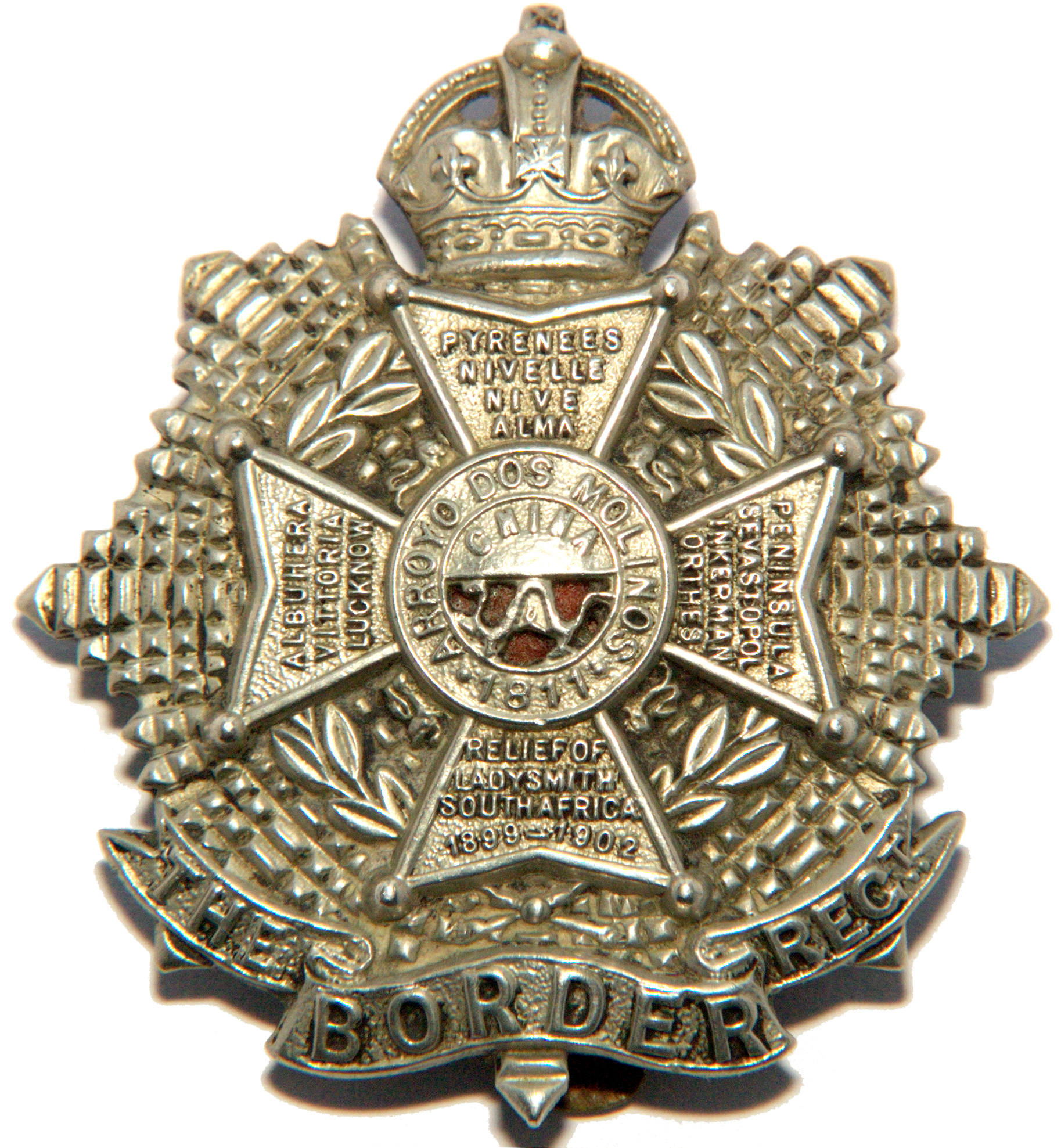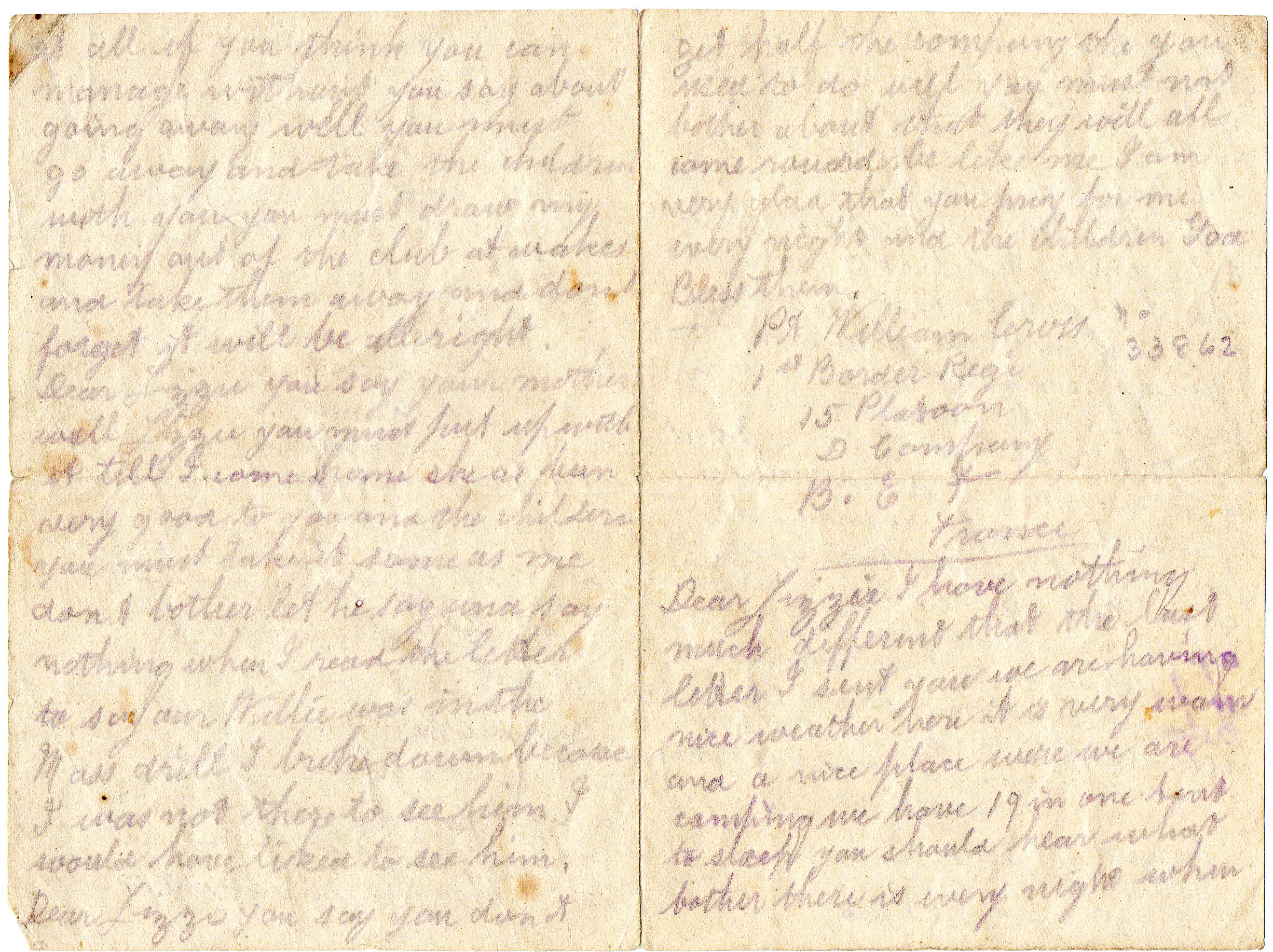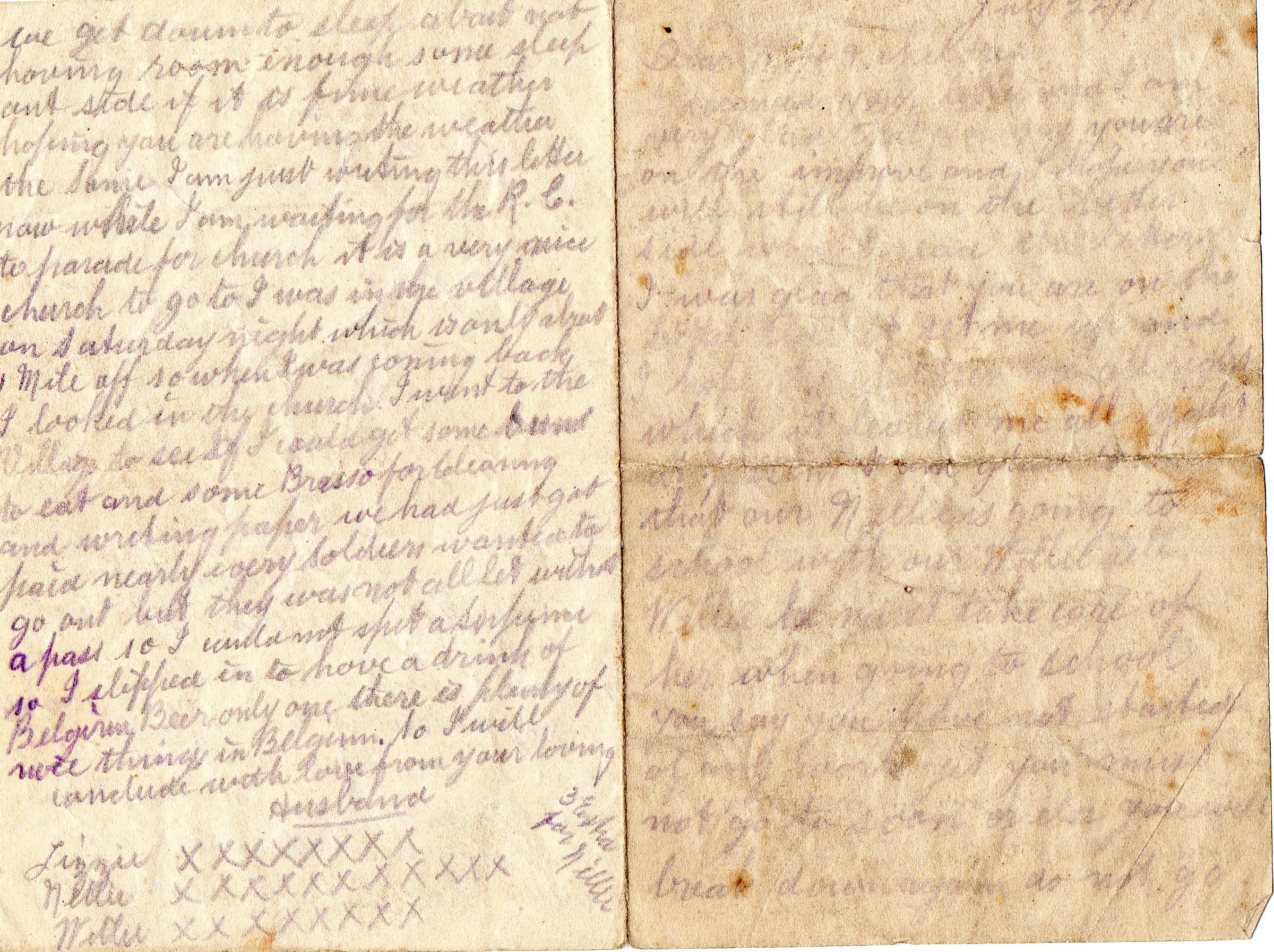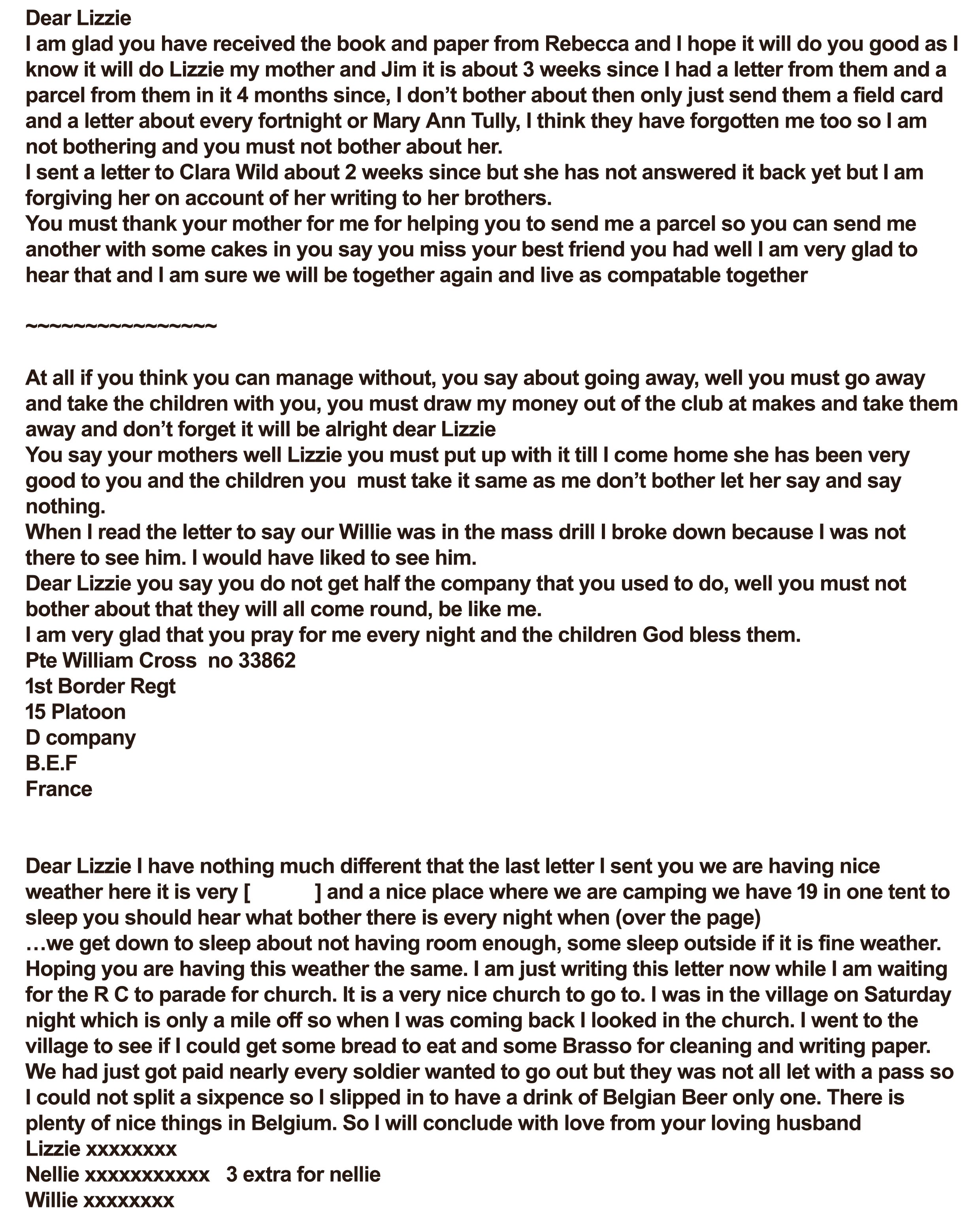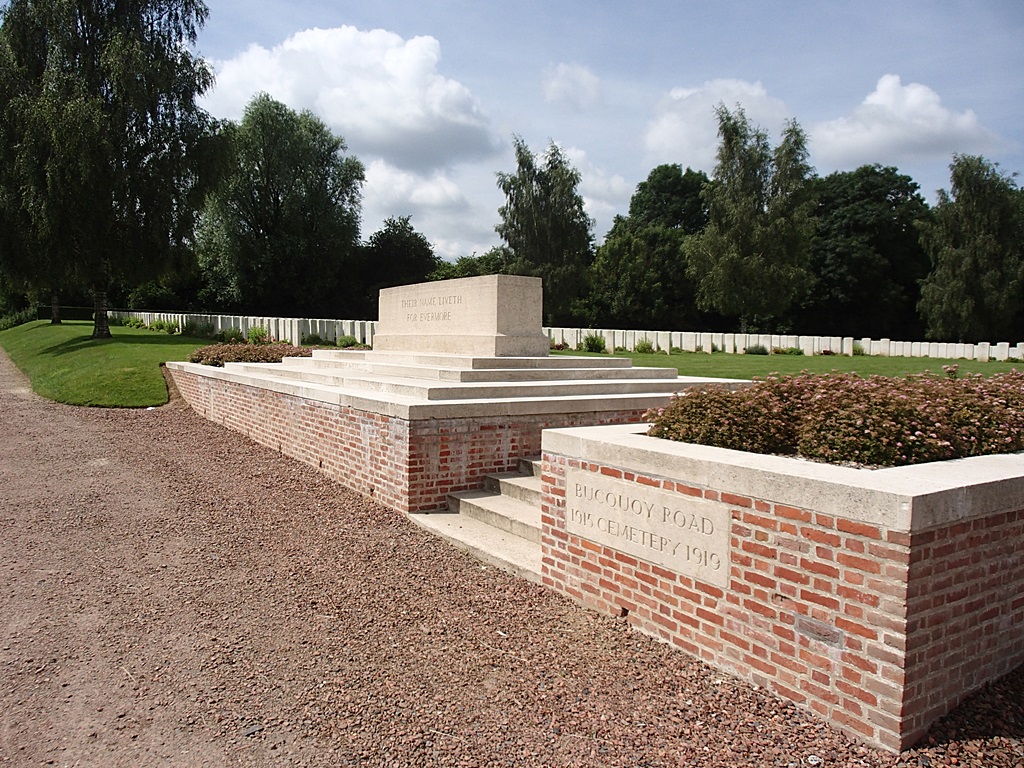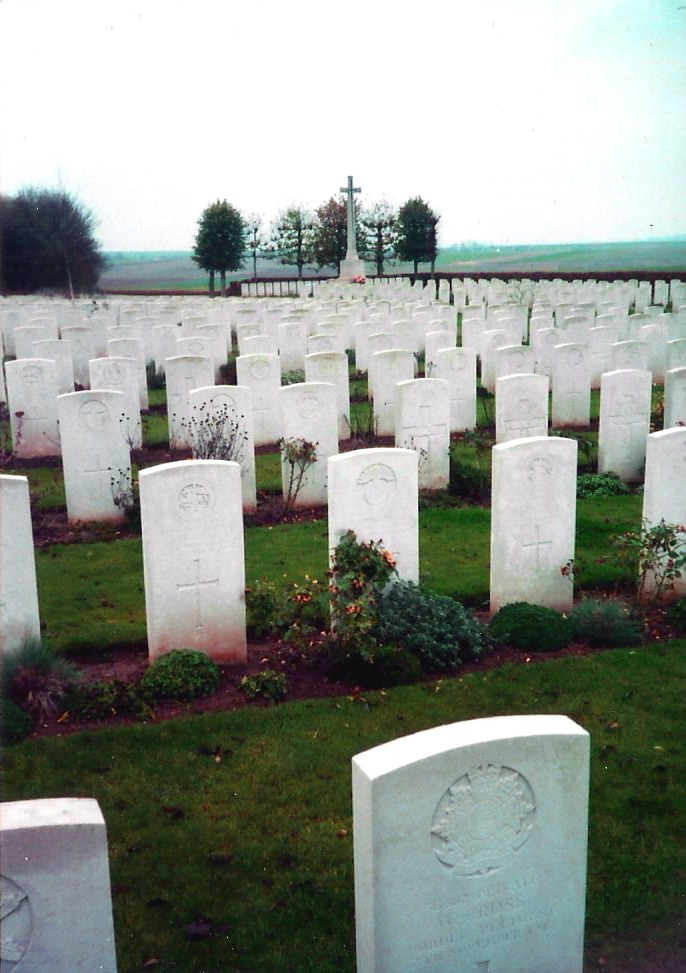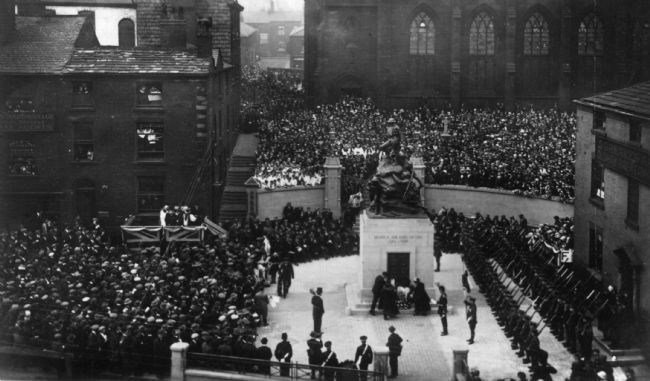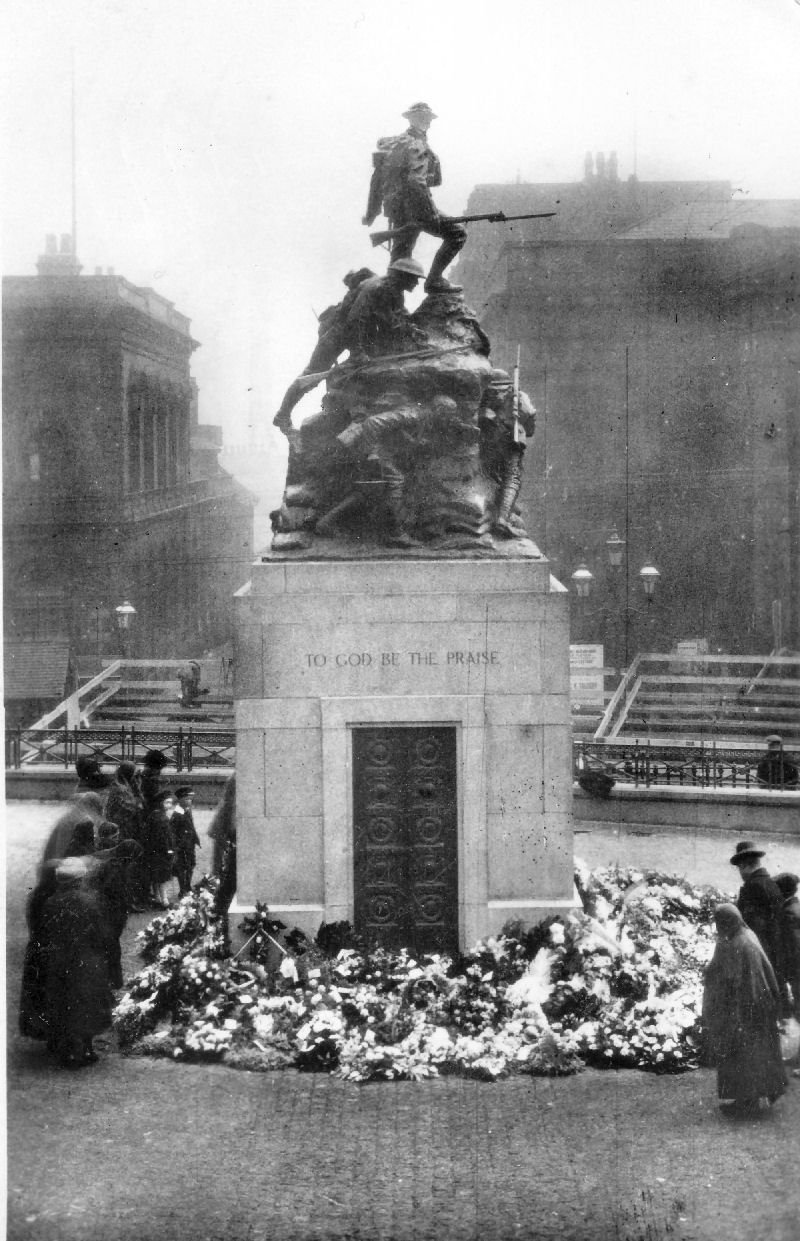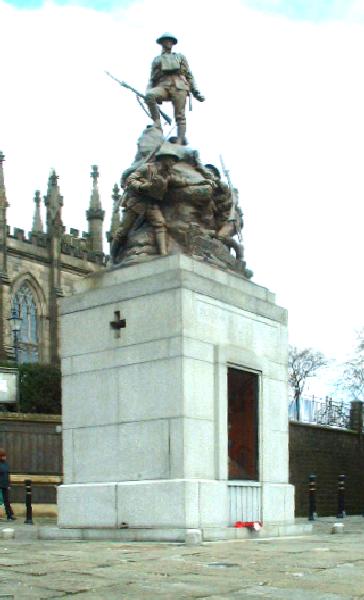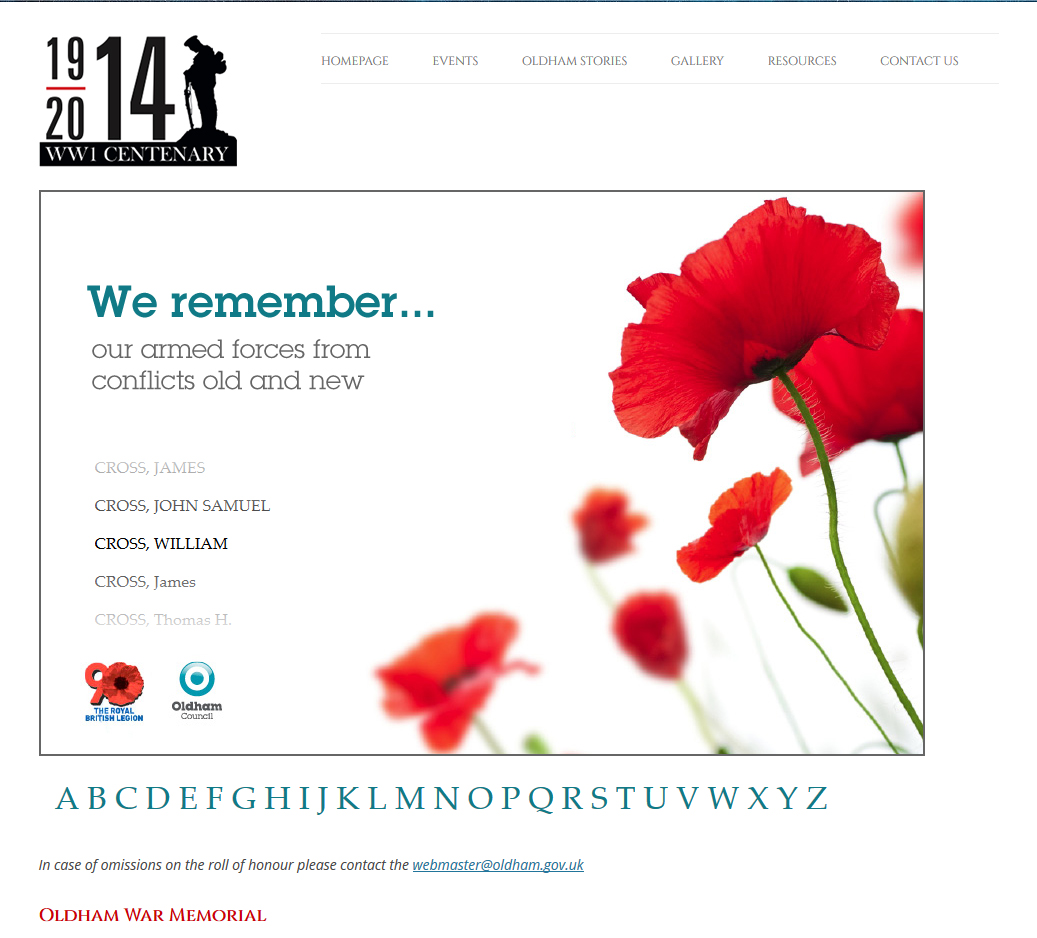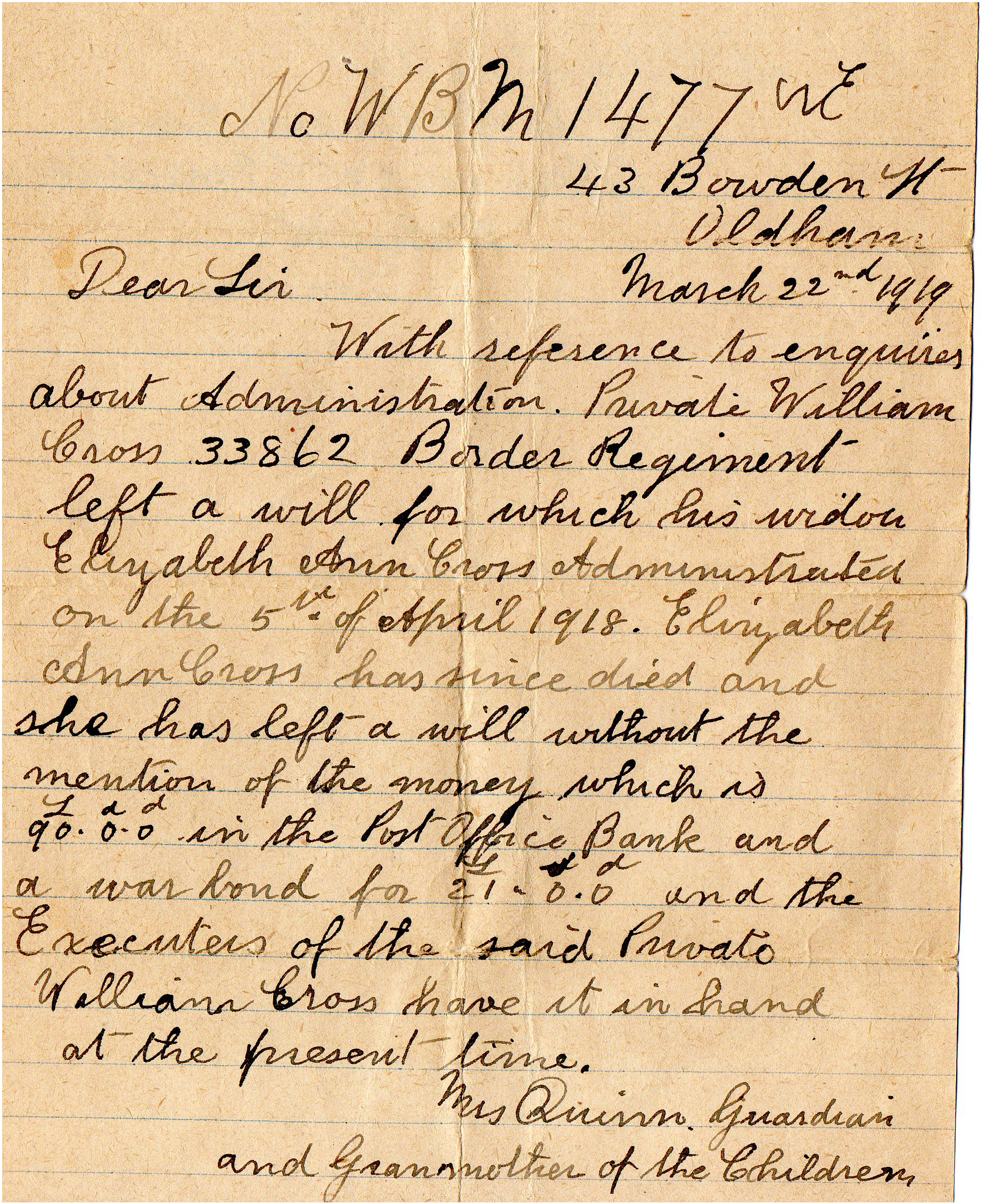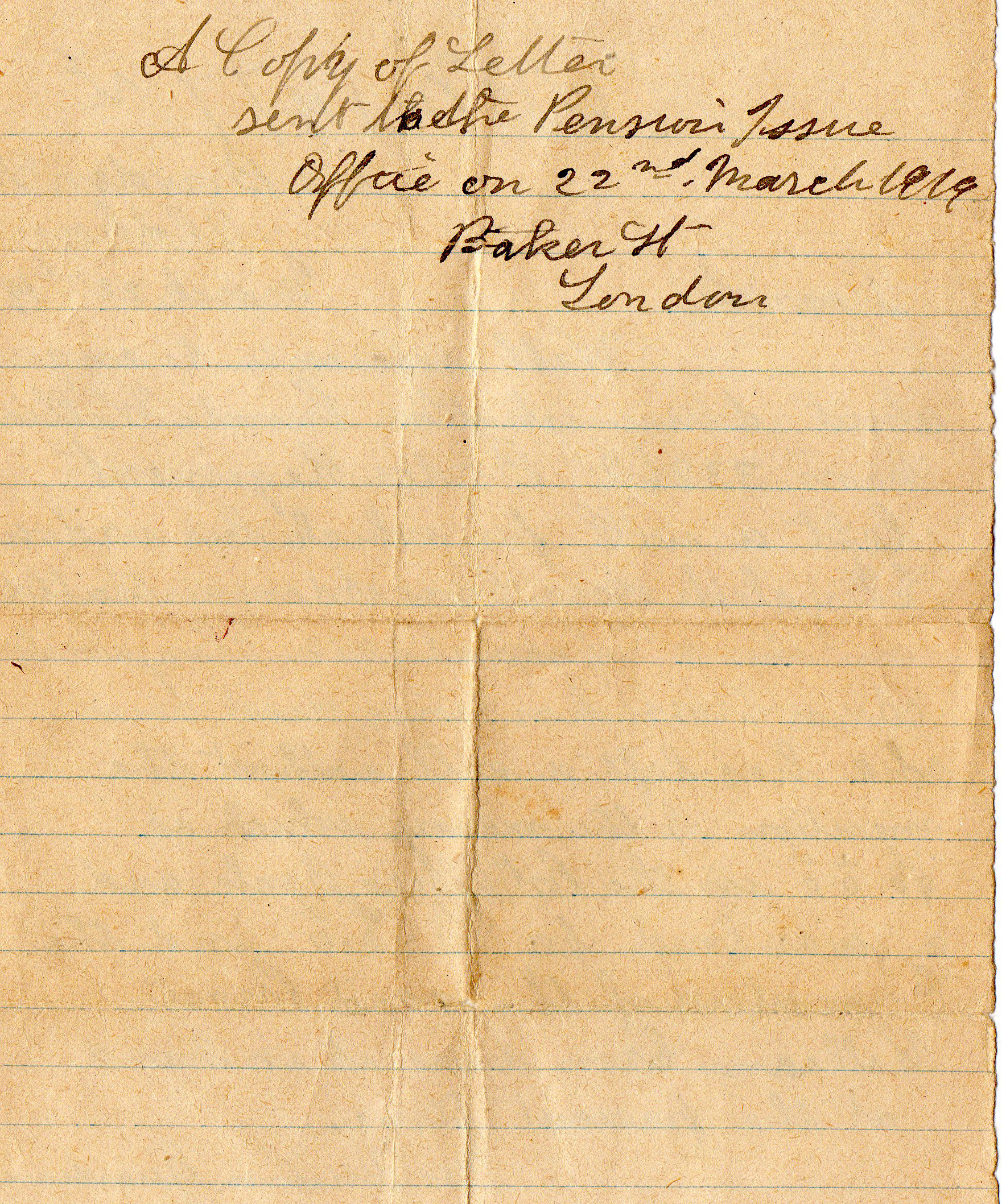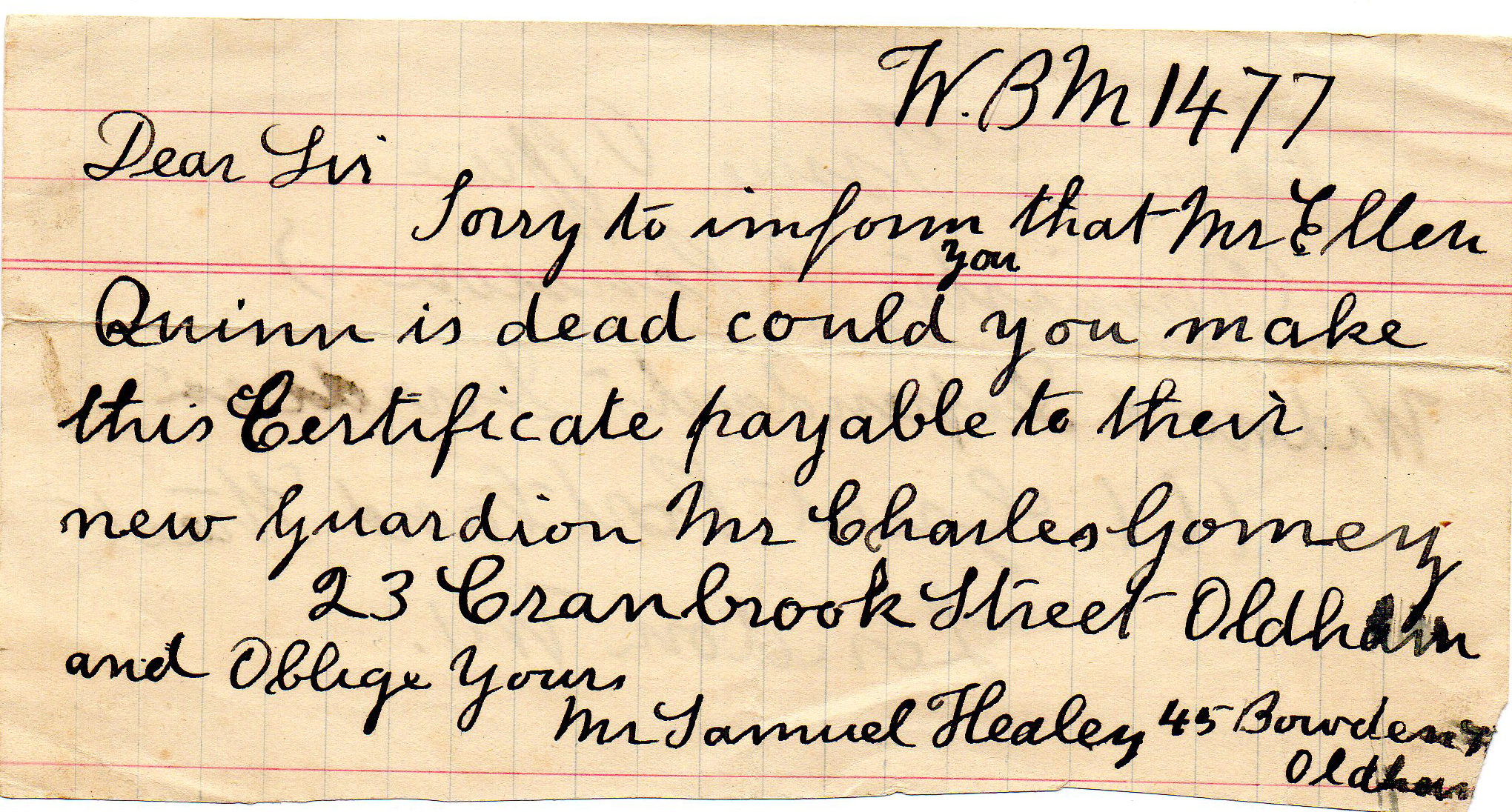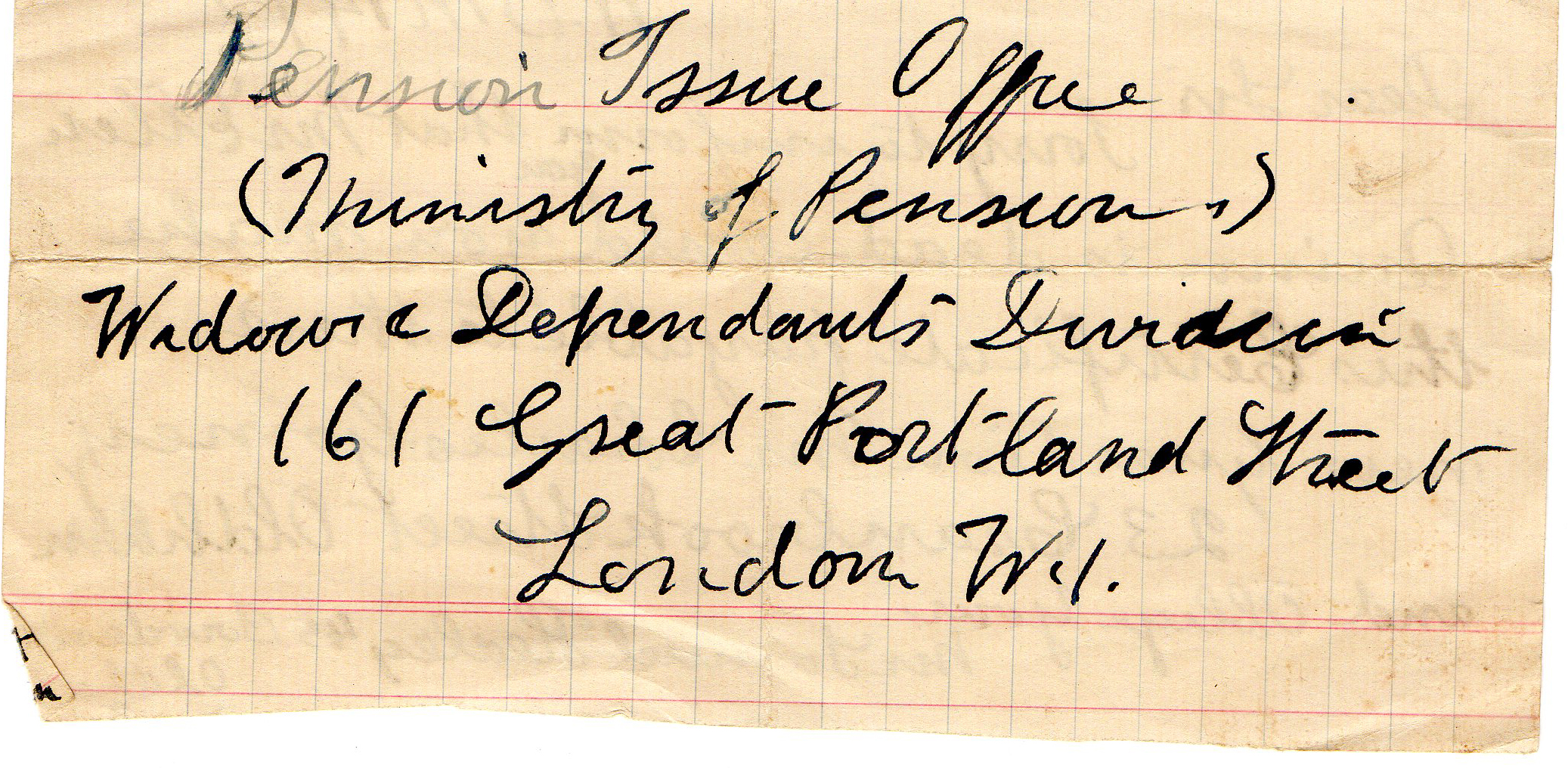William Cross
(Click any thumbnail image to view full size)
Family
A 36 year old William appears on the 1911 census living at 43 Bowden Street in Oldham with his wife Elizabeth (32) and their 4 year old son, also called William. William (snr.) was working as a store keeper connected with the cotton industry, which at that time was at its peak in the North-West. Elizabeth was evidently also involved, working as a spinner, perhaps in the same store, or at a nearby mill. The photograph below was taken looking into Bowden Street (click to enlarge). Both Chesterfield Street and Bowden Street were extensively redeveloped, with Bowden street disappearing completely in around the 1960s.
They went on to have another child, Ellen, whom they later referred to in their letters as "Nellie" on 18/10/1912.
William CROSS (Private)
33862, 1st Battalion Border Regiment
British War Medal, Victory Medal and Memorial Plaque
(all kindly on temporary loan from the family)
The Military Service Act specified that single men between the ages of 18 and 41 were liable to be called-up for military service unless they were widowed, with children or ministers of religion. Conscription started on 2nd March 1916. The act was extended to all married men on 25th May 1916. Whilst is is possible William was a volunteer, it appears likely that William was very unfortunate to be just within the scope of the newly extended criteria of conscription. He was placed in the Royal Lancashire Regiment to begin training, sometime in 1917.
A letter sent home during his time in training describes his first experience of trench warfare with "sludge up to the knees" in the "pitch black" with rockets going up "like at Belle Vue" (a popular event at Belle Vue Gardens in Manchester where they held annual battle re-enactments with a fireworks display). The original letter, plus a transcription can be viewed below (Click any image to enlarge)..
Whilst in training, on July 27th 1917, prior to being deployed in France, William wrote a short will, which is shown below (click to enlarge).
As referenced in his letter, William was transferred into the 1st Battalion Border Regiment. He would be part of a draft of reinforcements to replace men of the regular army who had been killed or wounded. The 1st Border Regiment had participated in the landings at Cape Helles, and the following fighting for Gallipoli in 1915, eventually being re-assigned to France in March 1916. They would have most recently seen action in the 1st and 2nd Battles of the Scarpe, as part of the Battle of Arras between 9th and the 24th April 1917, prior to Williams arrival. The 1st Battalion war diary shows a draft of reinforcements "from base" during the week ending 3rd August. Although they recieve a further draft the following week, I believe based on the circumstantial evidence of the letters and hastily written will shown above, sometime between Monday 31st July and Friday 3rd August 1917 is the most likely time William arrived in France. That same week, the 1st Battalion sustained 23 casualties, including 9 dead.
Whilst most conscripted men would have found themselves in newly formed battalions, or as replacements into the "new army" battalions, William would have found the transition into a hardened pre-war regular army unit quite disorientating. He would have had to learn quickly all the skills needed to be accepted by his comrades.
Below are some other letters William sent back home to his beloved wife, Elizabeth and his two children. Some of the writing is so faded as to be illegible, but what can be read is also transcribed below (click any image to enlarge).
[ nb. The following events have been summarised from the Battalion War Diary. All place names are as stated therein. ]
It is likely William arrived while the 1st Borders were at "Penton Camp", in the Proven Area of the Ypres Salient, in Flanders. The unit was preparing for the 3rd Battle of Ypres. The camp was located close to the St. Sixtus Abbey of Westvleteren. The abbey was famous for its artisan production of Trappist ales. William even mentions in his letter (above - click to enlarge), that he got a pass to visit the village, where he bought bread, writing paper and Brasso for cleaning, as well as having a Belgian Beer... "only one"! As a practising Roman Catholic, William wrote this letter while waiting for the service to start in the local village, about a mile from the camp.
On the 6th August, training continued at Penton Camp, although the diray notes that the ground was heavy and waterlogged, making training difficult. By the 9th August, the 1st Borders had moved to Ballentine Wood, specifically De Wippe Caberet (near De Wippe, which is on the road between Woesten and Poperinge), in the Forrest Camp Area. On the 11th, they moved during the night onto the line at Soales Farm, in preperation for the coming action. D Company, including William took up positions in the nearby wood, along with B Company, while A company probed deeper to observe the enemy, ultimately making contact and taking casualties.
On the 12th August, the battalion moved up to Fourches Farm front line trenches and were hit by an enemy artillery barrage, sustaining 40 casualties, with much of the same on the 13th, including direct hits on the Battalion HQ, causing 15 casualties. On the morning of the 15th, the battalion were relieved and moved to bivouacs at Blevet Farm. At 9pm they arose and marched to the assembly point "East of the Steenbeek", for what was to be their part in The Battle of Langemarck, part of the second phase of the Third Battle of Ypres. At 2pm the floowing day, The battalion formed up for orders. William's D Company, alongside B Company were to be the first wave, with A and C in the second wave of the day's attack.
William and the others went "over the top" towards their objective line and fighting was sustained and heavy throughout the day, although Border Regiment casualties were relatively light. The Battalion war diary covering this period reads that they were able to pour rifle, machine gun and lewis gun fire onto the exposed enemy, inflicting heavy casualties on the Germans, even remarking that the front line troops "had never seen such a 'picnic' oppurtunity since Gallipoli". By the end of the day, though, the Battalion had still suffered 14 killed, 67 wounded, 23 missing.
By midnight of the 17th August, the Battalion had moved to Charterhouse Camp, near De Wippe Caberet. After a quiet period of rest and a light work load, the Battalion return to the frontline on the 24th at Cannes Farm. An attempt was made to ambush an enemy observation post near Ney Wood, with D company managing to take a prisoner. On the 25th and 26th, the weather continued to be "appaulingly wet", and the 1st Borders suffered "considerable" shelling, hampering their time in the trenches. Observation posts were established within 25 yards of the enemy, and a Prussian Guard was taked prisoner. The Battalion moved off the frontline back to the support trenches on the 28th, having sustained 33 killed, missing or wounded.
September was largely uneventful, with most of the month spent training and resting. On the 2nd October, the Battalion as back on the line at Widjen Drift, suffering enemy shelling, which inflicted 30 casualties. They were relieved on the 5th by the Coldstream and Grenadier Guards. They were on the move once again, arriving at Dublin Camp near Ypres on the 6th, then onto Piddington Tent Camp in very muddy conditions on the 9th. The rest of the month was focused on training, with the battalion moving to Bailleulmont in the Pas-De Calais just South-West of Arras on the 16th October, and despite some tragic accidents involving an accidental wounding and death from grenades, was largely uneventful.
At some point during this time in training, the father-of-two William became ill, and was evacuted to a casualty clearing station near the village of Ficheux, where he died shortly afterwards, aged 42. On the "effects" register which deals with gratuities and pension details for the next of kin, his cause of death is listed simply as "disease".
William Cross is buried and remembered, with honour, along with 1,900 other men of the British and Commonwealth forces who died in the Great War, at Burcquoy Road Cemetery, near Arras. (click any image to enlarge). The cemetery was used again in May 1940 for the burial of troops killed during the German advance. There are a further 136 burials and commemorations of the Second World War.
William is additionally remembered in the Book of Rememberance, housed within the Oldham War Memorial. Shown below is the memorial at its unveiling in 1923, and as it looks today, plus a screenshot of the digital version of the memorial scrolls online, showing William's entry (click any image to enlarge).
When the Pension Issue Office attempted to contact William's next of kin, his wife Elizabeth, they recieved a response, dated 22nd March 1919, from Elizabeth's mother, Ellen Quinn. It explains the situation with the dealings of Elizabeth's will. Elizabeth had sadly passed away on the 25th January 1919, aged 41. Ellen was now the guardian of her grandchildren "Willie" and Nellie". The letter can be seen below (click to enlarge).
Sadly, the heartache was not yet over for Willie (by now 12 years old) and his younger sister Nellie. A further letter (below), written around a month later by their next-door neighbour at 45 Bowden Street, Samuel Healey, informs the Pension Office of the death of the children's Grandmother, Ellen, who died on 3rd April 1919, aged 79. Their new guardian is noted as, Charles Gomez, who was living at 23 Cranbrook Street, Oldham.
William's widow, Elizabeth, is buried with both her parents, plus William himself is listed as part of the memorial at their resting place. The headstone was recently replaced with an exact copy, and is shown below.
Charles Gomez, the childrens' new guardian was 58 years old in 1919 and, as can be seen on both the 1901 census and 1911 census linked below, his profession was, curiously, a coffin maker. He was a friend of the family, but probably would have been aware of the situation from his dealings with the family funeral arrangements.
Charles "Chas" Gomez on the 1901 Census - living with his wife Elizabeth and daughter, also Elizabeth, Aged 8, plus his brother in-law.
Charles Gomez on the 1911 Census - living with his wife, Elizabeth, and a boarder. The record showing they have one child living and one child who has died.
William's medals and memorial plaque were eventually claimed by his son, Will (who spent most of his life in service with the Fire Brigade) in April 1940, having previously been undelivered, and returned for disposal in 1919.
Links to the original documents (other than those shown above) used for research -
William Cross - Medal Index Card
William Cross - British War and Victory Medal Roll
William Cross - Memorial Certificate (PDF)
William Cross - Headstone Schedule
William Cross - Headstone Schedule 2
William Cross - Listing in the Army Effects Register
William Cross - Listed in the Cemetery Register
William Cross - Grave Registration Report - Final
William Cross - Listing on "Soldiers Died" (PDF)
Border Regiment War Diary (August - November 1917) (PDF) *PENDING*
Trench map of Ballentine Forest showing Dublin Camp
Trench map of Forrest / Forrester Camp
Drawing of the
frontline at Langemarck on the Steenbeek - July-August 1917
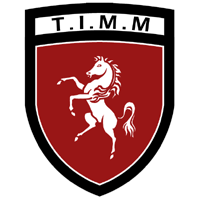 The Invicta Medal Museum (Online)
The Invicta Medal Museum (Online) 